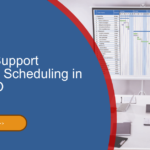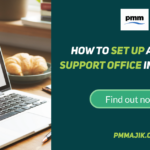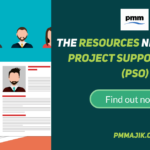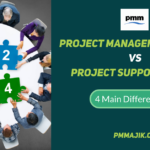 You may have been asked to set up a PMO or, you may have a strong desire to set a PMO up for your organisation as you believe (know) that it can deliver value.
You may have been asked to set up a PMO or, you may have a strong desire to set a PMO up for your organisation as you believe (know) that it can deliver value.
Unfortunately, many will not have the same view and this will greatly hinder or even stop the journey of setting up the PMO.
This is a real shame as organisations with a PMO typically enjoy a higher success rate than those who do not.
Interestingly the Global State of the PMO: An Analysis for 2015 by ESI found that PMO’s still use classic indicators to measure success based on budget and delivery as opposed to using metrics to demonstrate the value delivered by the PMO.
This in turn means that the senior management level (72% in the survey responses), continues to question the value delivered by a PMO.
The takeaway is that anyone embarking on securing approval to set up a PMO, must ensure that they win the support of all key stakeholders. When you think about this, it is no different to securing the support and funding for a project. If the business case does not make sense, you would not approve the project to proceed.
The same principle applies to the PMO.
Therefore, it is critical to have a clear structured approach on how you are going to secure the support and funding for your PMO.
Business Need
Every business case must start with a business need. What is the problem that you intend to solve? Why will solving this problem help? Asking and answering these questions will help focus why you need your PMO.
Important: While tempting, do not try to set up a PMO if there is not a need. This does not equate to value for your organisation.
Examples may be:
- Standardization of process
- Independent view of status
- Improved rigour
- Faster mobilization
- Improved delivery against business case.
Further information can be found in the post, What is the benefit of a PMO.
Build the PMO Business Case
It is important to clearly articulate the need and benefits of a PMO in the form of a business proposal or business case. This can be in the form of a standard business case template or a presentation.
Tip: it is important to know what format resonates best with the stakeholder(s) that you need to convince to provide their support.
For example, if you know that they respond better to presentations, you may need to prepare the standard business case template and then take the key points and prepare a Powerpoint presentation.
Yes, this is extra work. However, if it helps the stakeholders to connect with the proposal, it is worth the investment of time.
The art is to present the compelling reasons why the organisation needs a PMO. If you have done your homework, it should be easy for them to say “yes”.
Define what success will look like
This helps to ensure that you secure the support. You should look to convey what the sponsor can expect if the PMO is implemented. How it will make things better for them.
To give this weight, it is important to define what measures will be used to demonstrate success. This makes it real and shows that you are confident with your proposal.
Build Support
While the sponsors may be providing the ultimate support and funding, there will be many stakeholders with a vested in the PMO being a success (or not).
Make sure that you have identified those key stakeholders and invest time ensuring they understand what you are trying to achieve. How it will help them and be sure to address any questions or concerns.
Doing this ahead of the final approval will help that the sponsors hear positive feedback. It is also important that you act quickly to address and negative messages that you may hear directly or, more commonly, indirectly.
More information can be found in the post, PMO Stakeholder Analysis.
Summary
Following these steps should help to construct a solid business case and secure the support of sponsors and stakeholders. This is important as without this support, it will be very difficult, if not impossible to achieve your objective of setting up a PMO.






